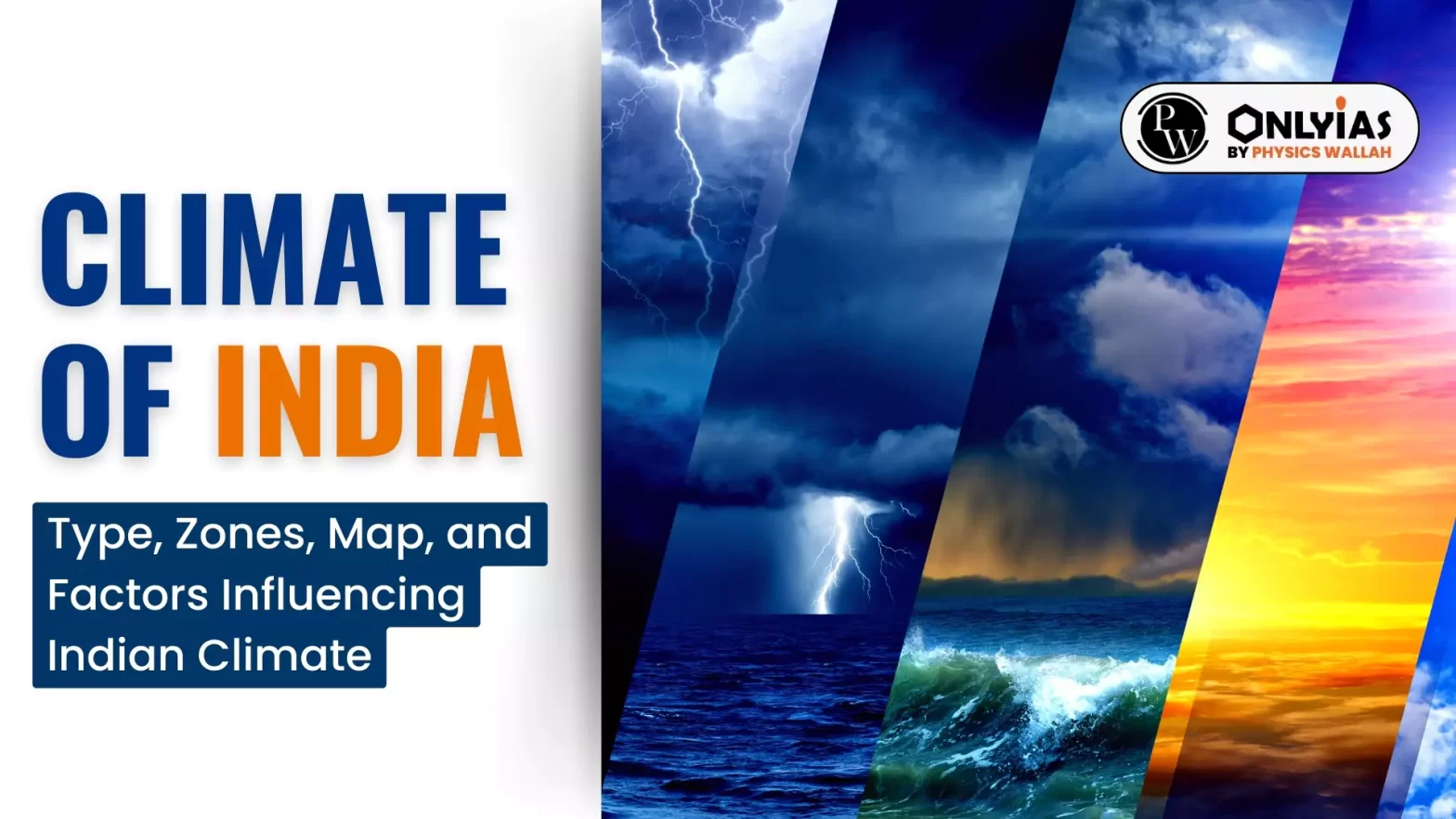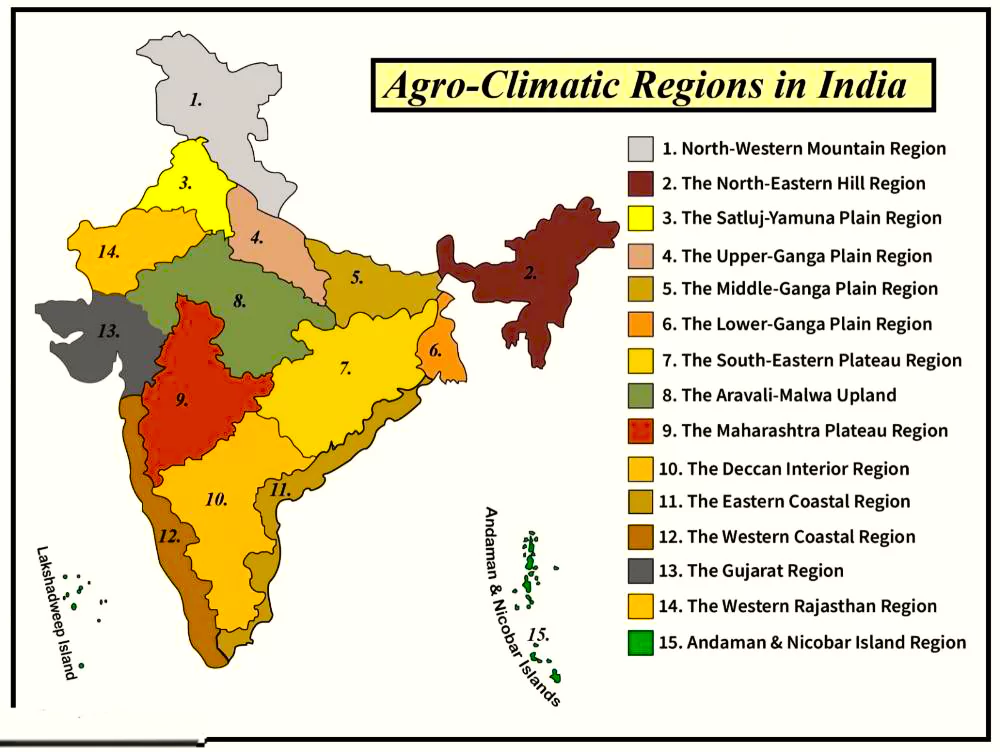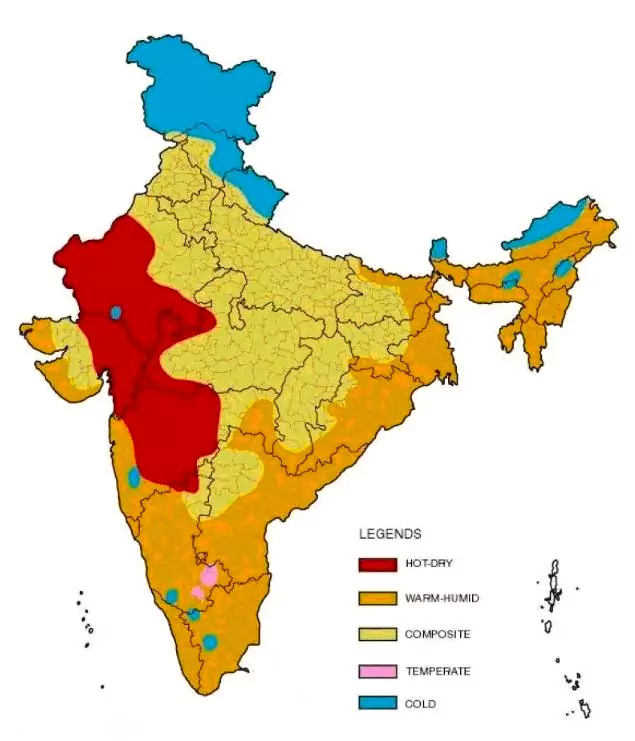Climate of India: Indian climate and weather is unique, making it a fascinating topic for study. In recent times, India’s climate is witnessing changes due to anthropogenic causes.

Climate of India: Indian climate and weather is unique, making it a fascinating topic for study. In recent times, India’s climate is witnessing changes due to anthropogenic causes.
Monsoon type of climate is a climatic type that is caused due to the onset of monsoonal winds. This type of climate is based on distinct seasons and the reversal of monsoon winds.
Monsoon Winds: India experiences monsoon type of climate because the country’s climate is influenced by the monsoon winds or the changing weather conditions. This condition occurs as a result of differential heating of land and water bodies and pressure situations.
What Are Monsoons?Monsoons are seasonal winds that reverse their direction based on the change in season. The monsoons are responsible for bringing rainfall in the Indian subcontinent. Monsoon in India can be divided into two types: Southwest Monsoon and Northeast Monsoon.
Factors Causing Indian Monsoon
Importance of Monsoon for India
|
El Nino:
La Nina:
Madden-Julian Oscillation (MJO):
Indian Ocean Dipole:
|
|---|
Agro-climatic zone refers to a land unit in terms of major climates, suitable for a certain range of crops and cultivars.

Map: Agro-Climatic Zones of India

| Code of Climate | Type of Climate | Regions under the Climate |
| Aw | Tropical Savanna | India’s peninsular plateaus, south of the Tropic of Cancer. |
| Amw | Tropical monsoon with short dry season | India’s west coast, south of Goa. |
| As | Tropical moist | Coromandel coast of India. |
| BShw | Semi-Arid steppe | Gujarat’s north-west, parts of Rajasthan and Punjab. |
| Bwhw | Hot desert | Western Rajasthan. |
| Cwg | Monsoon with dry winters | Gangetic plain, eastern part of Rajasthan, northern Madhya Pradesh, north-east India. |
| Dfc | Cold humid winter with short summer | Arunachal Pradesh |
| E | Polar Type | Jammu and Kashmir, Uttarakhand, Himachal Pradesh. |
Koppen’s Climate ClassificationKoppen classification is a type of climate classification based on mean monthly temperature, the mean monthly rainfall and the mean annual rainfall.
|
|---|
India is a unique country, which experiences a variety of climatic conditions, ranging from dry to ice cold. These climatic conditions are responsible for influencing India’s traditions, attire, food, festivals, economy, consumption etc.
| Must Read | |
| NCERT Notes For UPSC | UPSC Daily Current Affairs |
| UPSC Blogs | UPSC Daily Editorials |
| Daily Current Affairs Quiz | Daily Main Answer Writing |
| UPSC Mains Previous Year Papers | UPSC Test Series 2024 |
Monsoon type of climate is a climatic type that comes under the influence of the monsoonal winds.
India experiences a monsoon type of climate because the country’s climate is influenced by the monsoon winds or the changing weather conditions.
Monsoons are seasonal winds that reverse their direction based on the change in season. The monsoons are responsible for bringing rainfall in the Indian subcontinent.
Koppen classification is a type of climate classification based on mean monthly temperature, the mean monthly rainfall and the mean annual rainfall. Koppen classification divides terrestrial climates into five major types, which are denoted by the capital letters A, B, C, D, and E.
Agro-climatic zone refers to a land unit in terms of major climates, suitable for a certain range of crops and cultivars. The classification of agro-climatic zones considers the soil types, rainfall, temperature and water availability which influence the type of vegetation.
There are 15 types of Agro-climTIC zones in India. Major among them include Western Himalayan Region, Trans gangetic Plains Region, East Coast Plains and Hills Region, Western Dry Region etc.
There are many factors ranging from latitude, altitude, distance from sea, air pressure, air circulation etc that affect India’s climate.
India experiences a monsoon type of climate, which is a type of climate that is influenced by the monsoon winds or the changing weather conditions.

<div class="new-fform">
</div>